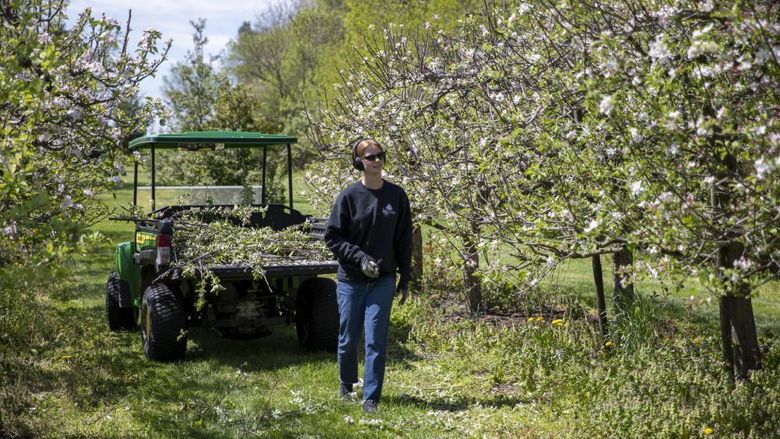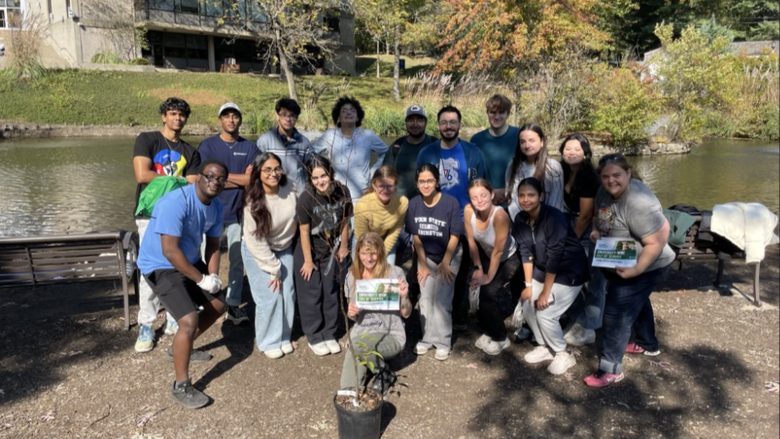
Mike Fidanza
WYOMISSING, Pa. — A professor of plant and soil sciences at Penn State Berks and former editor-in-chief of the International Turfgrass Society Research Journal, Mike Fidanza has received numerous awards for teaching and research.
Most recently, Fidanza served as the editor of “Achieving sustainable turfgrass management," a new textbook centered on implementing eco-friendly initiatives in maintaining turfgrass, published in January by Burleigh Dodds Science Publishing.
While attending Penn State University Park campus, where he earned his bachelor’s degree in agricultural sciences and master’s degree in agronomy, Fidanza met Don Waddington, Penn State professor emeritus of soil science. Waddington told him about an opportunity to earn a doctoral degree in plant pathology at the University of Maryland. After working on a plant pathology project, Fidanza was hooked.
Fidanza’s research focuses on turfgrass ecology, diseases, and plant protection. He gravitated toward this area of study, he said, because it is not a highly researched field and the diseases that affect turfgrass are complex. In 2016, Fidanza created the Penn State Berks Center for the Agricultural Sciences and a Sustainable Environment (CASSE), which conducts agriculture, horticulture, plant and soil ecology, rhizosphere microbiome, and turfgrass science research, and supports teaching and outreach efforts on campus.
Burleigh Dodds Science Publishing, based in Cambridge, U.K., reached out to Fidanza before the COVID-19 pandemic hit about writing a textbook that would be a part of its agricultural sciences series. The series highlights ways to implement sustainability initiatives into taking care of different crops.
Fidanza said that the process of developing this book was “the perfect storm” because it posed an opportunity to highlight the importance of turfgrass science and improving its environmental impact.
“We don’t have a book in the discipline of turfgrass science that I think captures the latest research-based information on sustainable practices,” Fidanza said. “There’s no book like that on the market. Plus, there has been a lot of research that has happened in the last ten to 20 years that hasn’t shown up in book form.”
He enlisted the help of researchers in the field to write chapters for the book based on their area of expertise. Fidanza said he wanted to involve early-career scientists in contributing to the book “because they have the latest research” and to give them a chance to be featured in a publication. Ultimately this book represents the "three E's of sustainability": environmental stewardship, economics, and ethical-social impacts (as indicated by Cale Bigelow, professor of turf science and ecology at Purdue University, in his review of the textbook.
Turfgrass’ environmental impact has become more of a conversation in the last 10 to 20 years as the discussion surrounding climate change has increased. States have developed best practices for landscapes to, for example, minimize fertilizer and water usage and recycle grass clippings. Fidanza said that the increasing economic impact of turfgrass science is also a factor as the costs of resources rise, resulting in a push to maximize quality over quantity. However, stressors like diseases, insects, and weeds hinder these efforts.
The book is broken into three parts — physiology, breeding and cultivation; biotic and abiotic stresses; and case studies — with 20 chapters total. Part one discusses the latest advances in turfgrass management while part two examines the current environmental factors that affect turfgrass. Additionally, part three supplies real-life examples of the newer management practices at work, something that has improved as more studies have occurred, said Fidanza.
“Because of our science, our tools have gotten better. We can extract soil and roots and analyze them better than we have in years past,” he said. “A lot of research now is focused on looking to improve the rhizosphere (the zone of soil surrounding a plant root) to then have healthier grasses so they don’t need as much fertilizer.”






